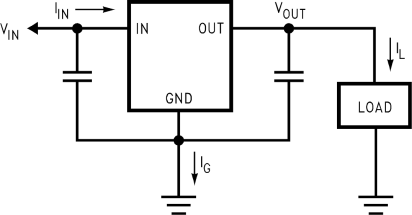ZHCSH33Z September 1997 – April 2025 LM317
PRODUCTION DATA
- 1
- 1 特性
- 2 應用
- 3 說明
- 4 Device Comparison Table
- 5 Pin Configuration and Functions
- 6 Specifications
- 7 Detailed Description
-
8 Application and Implementation
- 8.1 Application Information
- 8.2 Typical Application
- 8.3
System Examples
- 8.3.1 0V to 30V Regulator Circuit
- 8.3.2 Adjustable Regulator Circuit With Improved Ripple Rejection
- 8.3.3 Precision Current-Limiter Circuit
- 8.3.4 Tracking Preregulator Circuit
- 8.3.5 1.25V to 20V Regulator Circuit With Minimum Program Current
- 8.3.6 Battery-Charger Circuit
- 8.3.7 50mA, Constant-Current, Battery-Charger Circuit
- 8.3.8 Slow Turn-On 15V Regulator Circuit
- 8.3.9 AC Voltage-Regulator Circuit
- 8.3.10 Current-Limited 6V Charger Circuit
- 8.3.11 Adjustable 4A Regulator Circuit
- 8.3.12 High-Current Adjustable Regulator Circuit
- 8.4 Power Supply Recommendations
- 8.5 Layout
- 9 Device and Documentation Support
- 10Revision History
- 11Mechanical, Packaging, and Orderable Information
封裝選項
機械數(shù)據(jù) (封裝 | 引腳)
散熱焊盤機械數(shù)據(jù) (封裝 | 引腳)
訂購信息
8.5.1.1.1 Heat Sink Requirements
The LM317 (new chip) regulators have internal thermal shutdown to protect the device from overheating. Under all operating conditions, make sure the device junction temperature does not exceed the rated maximum junction temperature (TJ) of 125°C for the LM317 (new chip). A heat sink is required depending on the maximum device power dissipation and the maximum ambient temperature of the application. To determine if a heat sink is needed, Equation 9 calculates the power dissipated by the regulator, PD.
Figure 8-18 shows the voltage and currents that are present in the circuit.
Equation 10 calculates the next parameter, which is the maximum allowable temperature rise, TR(MAX).
where:
- TJ(MAX) is the maximum allowable junction temperature (125°C for the LM317, new chip)
- TA(MAX) is the maximum ambient temperature encountered in the application
Using the calculated values for TR(MAX) and PD, Equation 11 calculates the maximum allowable value for the junction-to-ambient thermal resistance (RθJA).
 Figure 8-18 Power Dissipation Diagram
Figure 8-18 Power Dissipation DiagramIf the calculated maximum allowable thermal resistance is higher than the actual package rating, then no additional work is needed. If the calculated maximum allowable thermal resistance is lower than the actual package rating, correct this issue. Either reduce PD or TA(MAX), or lower RθJA by adding a heat sink, or some combination thereof. PD is the device power dissipation, TA(MAX) is the maximum ambient temperature, and RθJA is the device thermal resistance.
Equation 12 calculates the value if a heat sink is needed.
where:
- θCH is the thermal resistance of the contact area between the device case and the heat sink surface
- RθJC is thermal resistance from the junction of the die to the surface of the package case
When a value for θHA is calculated, select a heat sink with a value that is less than, or equal to, this number.
The θHA rating is specified numerically by the heat sink manufacturer in the catalog, or given in a curve plotting temperature rise versus power dissipation for the heat sink.